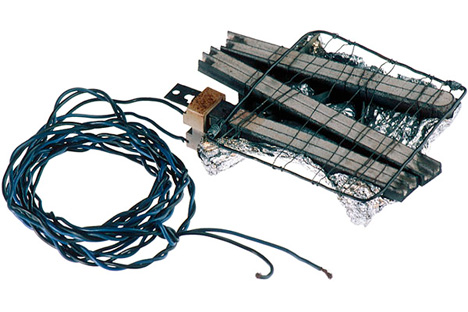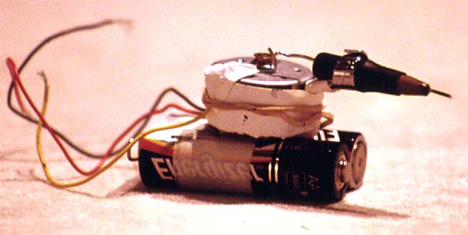Want to innovate? Embrace the constraints.
June 30, 2020
As a designer and leader of design teams I’m familiar with the challenges that designers can encounter that stand in the way of an ideal solution; The client has strong, opposing opinions, the pattern library isn’t flexible enough, there are limitations with the technology base and so on.
Designers that complain about these things are missing the point. Constraints are the gig! Our job as designers is to come up with solutions to problems and to do so within the context of any associated constraints. Design without constraint isn’t design at all - it’s art.
“Design is the intentional solution to a problem within a set of constraints.”
US designer, Mike Monteiro.
The challenges associated with constraints can certainly be frustrating at times and make the job difficult, but the trickier and more ‘wicked’ the problem, the better. That’s what makes for an interesting challenge and like with any puzzle, the more complex it is, the more rewarding it is to solve. Finding solutions that work for a complex set of constraints forces you to have to think differently, laterally and approach problems from alternative angles. Once you see constraints as a challenge and not a blocker, designing solutions can be a very rewarding exercise and often the point at which truly great innovation happens.
As I write this, I’m sitting at the desk in my home that I now work from full-time. Like many of us, I have transitioned to this way of working and accepted it as my new normal as a result of the Coronavirus crisis and the associated lockdowns. Like many businesses, we’ve transitioned all meetings to online/video, adapted our workshops to use collaborative, online software and communicate real-time through tools like Slack. While some of the team are still struggling with the change, most seem to have adapted well. We’ve successfully innovated as a result of an enormous, unforeseen constraint through necessity.
In many ways, we’re better off for the change. Personally, I’m finding I’m more productive, with less ad-hoc distractions throughout the day. Our team’s output has increased significantly as a result of the change, not to mention the business finding additional benefit through the savings associated with running a team remotely. This is working out so well that we’re considering continuing with a similar model even after the lockdown ends!
So why hadn’t we moved to remote working before? We considered the idea quite a bit at my old design agency a few years ago; We theorised about the many benefits it could bring and felt it could be an interesting and viable option. Many other businesses were already working remotely and evangelistic about the results, but whenever it came time to commit we didn’t go for it. A fear of the unknown, lack of impetus and the perceived potential risks were just too much to see it through. We never had a big enough constraint to make us do it!
There’s always potential for better ways to do things. Transformational change and particularly ‘digital transformation’ is something I’ve been involved in delivering for a number of organisations over the years. It’s usually a difficult, expensive, complex and time consuming exercise, yet here we are watching countless businesses adapt, change and transform (in many cases to be more ‘digital’) much more rapidly and cheaply than could ever have been thought possible. All as the result of an enormous, almost incomprehensible set of constraints brought about by a pandemic that no-one saw coming.
Australian futurist, Steve Sammartino, describes the situation nicely in a recent post on his website, saying:
“Never has business been so open-minded to change. While humans are the most innovative species on earth, we’re inconsistent. If things are cruising along nicely in life – then don’t expect much change. We’re creatures of habit and naturally risk averse. Currently it is riskier to not change, hence the embrace of change.”
Australian futurist, Steve Sammartino
While not ideal circumstances, in an odd way we needed something like this to happen to force the change. A situation where we’re forced into adapting because there is simply no other option.
Observing the numerous examples of innovation brought about by the COVID-19 situation has reminded me of another extreme example, that brought about through the constraints of prison life. Being locked up in a prison cell means having no resources whatsoever - the ultimate constraint - yet there are many wonderful examples of innovation as a result of - not in spite of - these conditions, including cigarette lighters and devices for cooking, as shown below.

Cigarette lighter made from a battery and wire.

Stove/grill using a broken heater, aluminium foil and wire.

Tattoo gun made from a battery, a small motor, a sewing needle and a few wires.
These ingenious examples were brought to my attention back in 2015 by Ben Keenan, a Melbourne-based creative who gave a talk entitled “No time, no resources and no budget is the most creative brief ever” at Pause Fest. The talk is on YouTube and I’d heartily recommend giving it a look. In it, he talks about ingenuity needing constraint in order to exist. He goes so far as to suggest that we should seek to create our own constraints in order to be truly innovative, citing Scarcity, Urgency and Purity as the required ingredients. Elements that feature heavily as catalysts for change due to COVID.
In talking about the restrictive socio-political environments that led to the formation of Hip Hop and Punk during his talk, Ben suggests that the constraints of the time led to “The foundation of some of our biggest cultural movements.” He’s not wrong, and with the changes we’re witnessing to almost every aspect of how we live, work and communicate in real time, right now, I’d say we’re witnessing ourselves in the middle of another.
Leave a comment
comments powered by Disqus